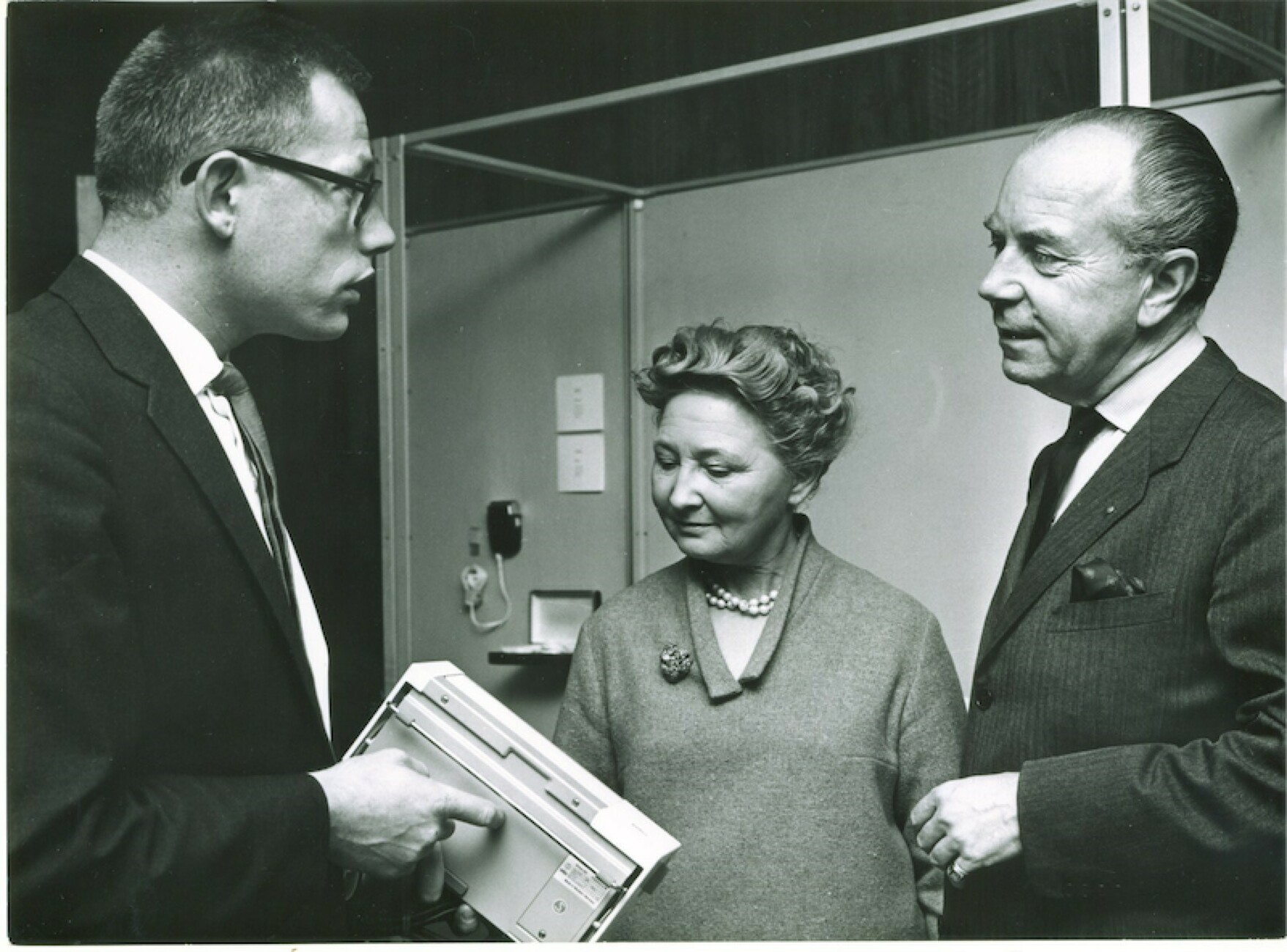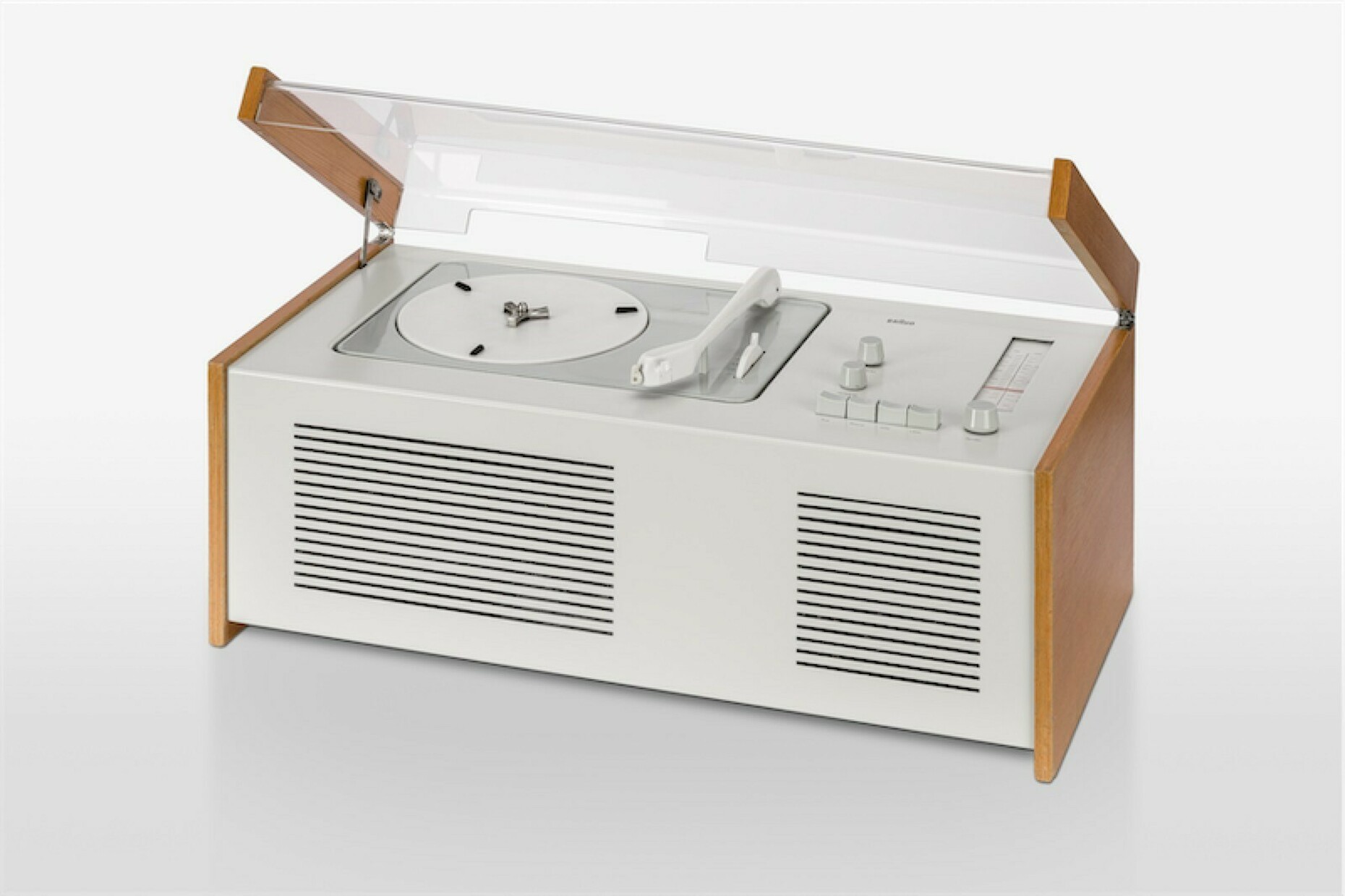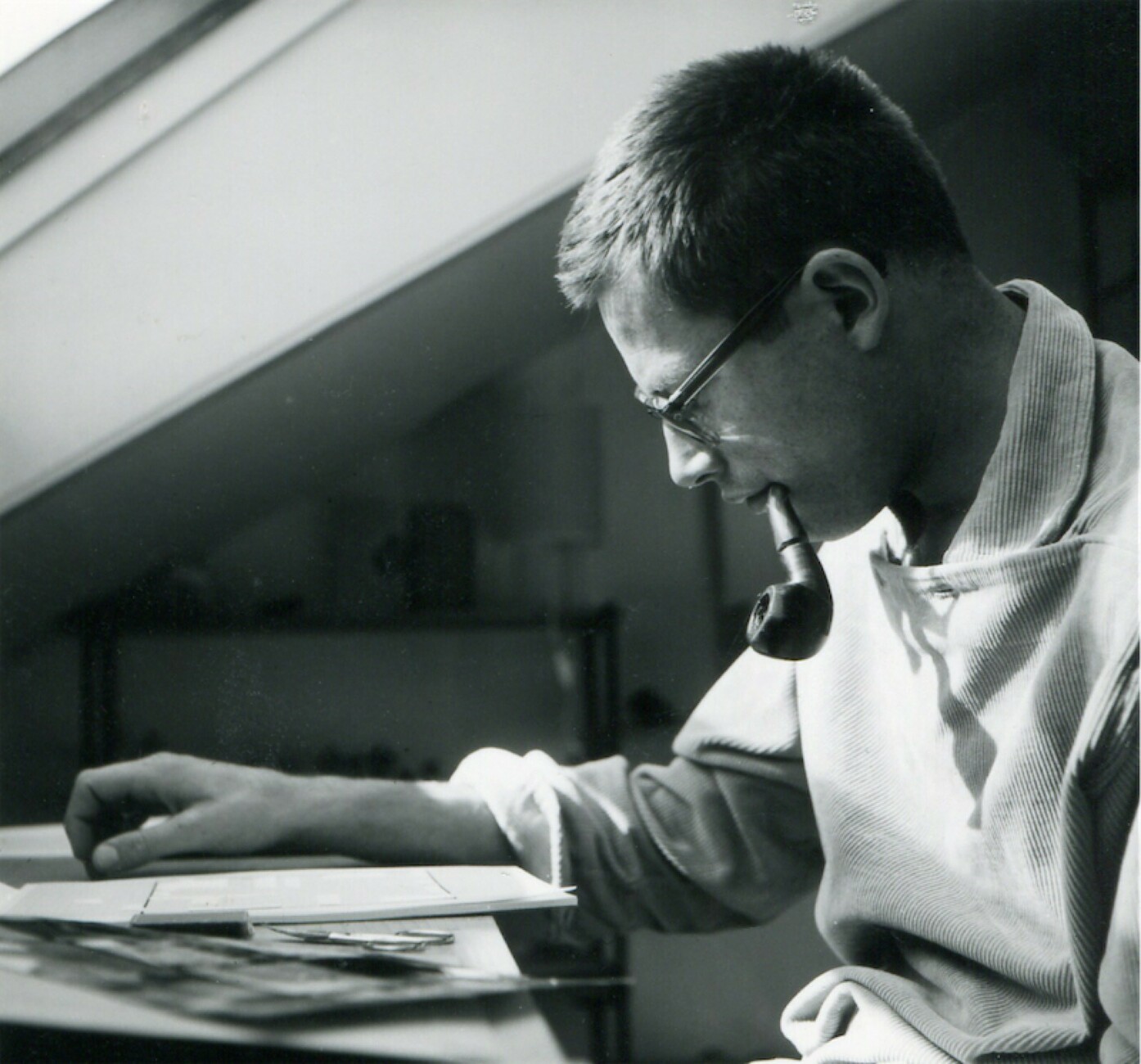Long on longevity
Anna Moldenhauer: Prof. Klemp, Dieter Rams’ designs have accompanied you throughout your career, including in the creation of the book “Less and More: The Design Ethos of Dieter Rams”. You are also a member of the board of trustees of the Dieter and Ingeborg Rams Foundation and have teamed up with the students at Offenbach University of Art and Design to begin an academic appraisal of Rams’ body of work. What is it about his oeuvre that so fascinates you?
Prof. Klaus Klemp: A defining moment was the exhibition “Less and More” in Osaka, which I was able to curate 15 years ago. I became involved in more and more projects with him as a result of that. In the meantime, I have of course worked on other exhibitions, but I’m still hugely fascinated by the Braun appliances. When you examine the designs by Rams and his team, you forever discover new things, and the same goes for Braun’s company history. Over a period of 40 years, a huge cosmos has formed, and after a phase under Peter Schneider, in which there were attempts to bring more emotion into the design in keeping with the times, the current Creative Director Oliver Grabes is now deliberately picking up where Rams left off in 1995.
The success of contemporary Apple products, which were inspired by the design of Braun’s products, goes a long way towards validating the latter’s conviction that “we developed an approach to design that is a model for others today, and that’s something we should continue to cultivate ourselves.” That’s what the company has been doing for ten years, even though it is now much more complicated since Braun is now a member company of the Procter & Gamble group. During the 1950s, the Braun team was a manageable size: As a designer, you had direct contact with the sons of the company’s founder, Artur and Erwin Braun, who managed the company, and with the art historian Dr. Fritz Eichler, who acted as the anchor when it came to the cultural background.
Why is now the time for an exhibition of the works by Dieter Rams at the museum angewandte kunst?
Prof. Klaus Klemp: The exhibition is less about Dieter Rams himself, although it is a very personalized show. Instead, it’s about what mattered to him in design. You’re no doubt familiar with his motto “less but better”, and that’s very topical today in light of mass consumerism. On the other hand, there is also a growing awareness of the environment and our future. This is a major issue, including among young people, which I think is wonderful. And that’s what he cared about: bringing about a shift in thinking, away from constant consumption and disposal, and instead opting for design that people can “tolerate”, as Adolf Loos once put it, over the long term. Our exhibition aims to convey this approach to longevity, showing appliances that are 50, 60 years old but which you could still place in your living room today.
What criteria did you apply to selecting these exhibits?
Prof. Klaus Klemp: Following the extensive exhibition “Less and More”, we as a foundation have now developed a smaller show that is designed to tour around different locations, since we regularly receive enquiries from international institutions wanting to exhibit the work of Dieter Rams. We are therefore only exhibiting about 30 items, along with a good 100 photographs and information panels. Dieter Rams wanted this touring exhibition to begin at the museum angewandte kunst in Frankfurt, because he holds the museum in such high regard.
Alongside ensuring the show could be easily transported for touring, were there any other major factors to take into account in your curation?
Prof. Klaus Klemp: Last year I sat down with Dieter Rams to produce a catalog of works, which is set out in chronological order. It contains all the designs, including those he produced away from Braun for other companies such as Vitsœ or FSB. The chronology shows that his work goes well beyond what he did at Braun. He was always working on other projects in parallel, including in the furniture industry. This catalog thus forms the basis for the current exhibition.
Does that mean you get a deeper insight into his overall oeuvre?
Prof. Klaus Klemp: Yes, exactly. His 606 shelving system dating from 1960, for example, is still being sold with great success all over the world. Once you have it, it lasts forever because it is so visually restrained. There’s something sculptural about it. I believe that’s because Rams has a keen sense of proportion.
Did you choose the exhibits in coordination with him?
Prof. Klaus Klemp: The collaboration on the catalog of works actually flowed seamlessly into preparation for this exhibition. We selected the works together, with some intense debate in the process, but in the end we were always able to agree on a common thread.
Recently Braun has presented new editions of classic products, for example in its collaboration with Off-White, whereby the original white “AB1” alarm clock has been bathed in a bright orange and a light blue. Virgil Abloh also recently gave the “HiFi Wandanlage” audio wall unit a metallic finish. Do you see this as homage or defacement?
Prof. Klaus Klemp: In the form of these collaborations, Braun is attempting to reach younger people who didn’t grow up with the typical Braun classics. In my opinion, though, the chrome plating of the “HiFi Wandanlage” was not entirely necessary. Either way, chrome has played a role at Braun, as for the “HT 2” toaster by Reinhold Weiss or the “T 2” table lighter by Dieter Rams. So, I guess, why not?
“Good design is environmentally friendly” is one of Rams’ ten theses, which he formulated more than 40 years ago. Yet it seems that it has taken until now for the call for sustainable design to be heeded. Why do you think this is?
Prof. Klaus Klemp: If the things that are currently described as “sustainable” are indeed sustainable, then it’s all very well. But these days there are barely any products that don’t bear the label “sustainable”, so there’s a lot of greenwashing going on. Even at the acclaimed Ulm College of Design they were considering designing objects that had longevity and were environmentally friendly. When the school closed in 1968, the “Institute for Environmental Planning” took up the baton and developed the notion further. The fact that Rams picked up on these approaches during the 1980s was extraordinary, since the decade was a high point in the age of plastic. The team investigated how plastic could be made more durable, without it yellowing or becoming porous, as well as how one might offer a design that remained visually compatible after many years. A coffee machine decorated with flowers, for example, might be fun for a while, but you would soon be fed up with it. The “KF 40” by Braun designer Hartwig Kahlcke, however, is still being sold today. This, in fact, is the principle that sums up the exhibition – less but better. Design that is long-lasting in every regard, including visually.
So do you believe that incorporating human needs into design is one of the factors behind the success of Dieter Rams’ creations?
Prof. Klaus Klemp: Absolutely. He always said he doesn’t want to impose anything on anyone. Dieter Rams was not interested in taking center stage with particularly effusive designs. His designs were intended to remain relatively modestly in the background, even though many of the products have the makings of showpieces thanks simply to their particular aesthetic. During the 1960s there was much criticism of functionalism, both in architecture and design, since the focus on function was considered to be “emotionless”. This movement was extremely important and led to postmodern alternatives, but the criticism is not actually valid in the case of the products by Braun. People can indeed feel emotion in relation to a Braun coffee machine; it’s just different to the way they might feel about a teddy bear (laughs).
Do you know what Dieter Rams thinks about the current debate surrounding sustainable design?
Prof. Klaus Klemp: He believes there is too little discussion, even though he welcomes the trend. With our exhibition, we can make only a small contribution, but I am convinced that there will be no other way – be it in relation to the current changes in the climate or the increasing consumption of resources. Something has to change.
Something of a personality cult has developed around Dieter Rams over the last few decades, even though he himself has constantly emphasized that he was part of a team at Braun. To what extent is the team important for the exhibition?
Prof. Klaus Klemp: The teamwork was advantageous because it meant a common trajectory could be pursued over a long period of time even as new influences frequently came into play. In 1972, for example, Florian Seiffert designed the “KF 20” coffee machine in bold colors and with large radii. This represented a new direction, but it was still within the context of the overall picture and still corresponded with the common basic approach. Within the team there was constant discussion, and Rams did a lot to ensure there was relatively broad scope for design, although the consensus remained. Hence, the products from Braun might all have remained without a logo; there were never too many factors disrupting the visual. Dieter Rams always kept the logos on the appliances as small as possible. The aim here was not only the success of the individual creations, but also maintaining the corporate design. The teamwork meant this functioned very well, and it was and is extremely important for all the design processes at Braun.
Do you feature the team at Braun in the exhibition, too?
Prof. Klaus Klemp: Yes, alongside the product information panels there are also kind-of thematic islands, and one of these is dedicated to the Braun design team and their collaborative work.
Does Braun or Vitsœ still have any designs by Dieter Rams lurking in drawers that might one day be produced?
Prof. Klaus Klemp: We actually show a couple of models in the exhibition that were never realized. From the outset, Braun supported us a great deal with loans, be it for the show in Osaka or for the Style Room at the museum angewandte kunst. The Braun collection is very comprehensive, which is largely thanks to Horst Kaupp. He worked for Braun building trade fair stands and exhibitions, and after the shows he collected the exhibited products in his warehouse in Offenbach instead of selling them off as people usually did after exhibitions. The initiative he put to the management board at Braun, proposing they preserve the products for posterity, is behind the current “BraunSammlung” which has been housed at the Braun company headquarters in Kronberg since 2005. Dieter Rams likewise wanted Braun to donate the product models to the museum, and that’s what they did. While I was teaching at Offenbach University of Art and Design, my students and I were able to categorize and reconstruct the ideas behind only a small portion of this huge collection; there’s still a lot of work to be done. But if you ask me whether there are still some designs in the drawer that might be produced, then I would say no. The technology and needs have changed. Once the body of work has been fully examined, however, then there is certainly another interesting exhibition to be had.
I think so too; after all, the design is still inspiring creatives today – and Apple has also profited hugely in economic terms from the food for thought it provided.
Prof. Klaus Klemp: It’s true. I thought it was very fair of Sir Jonathan Ive, then Apple’s Chief Design Officer, to always openly admit that the designs by Braun served as his inspiration. Steve Jobs also owned a large collection of Braun products. It was often claimed that Apple had copied the design, but that wouldn’t even have been possible because of the advancing in technology. What Ive was able to grasp was the approach to design taken by Dieter Rams and the design team at Braun, and he succeeded in translating this approach to the present day. When Apple launched the first smartphone in 2007, the accompanying digital pocket calculator app was almost identical to the surface of the “ET 66”, which Dieter Rams and Dietrich Lubs had designed in 1987. Sir Jonathan Ive sent Rams one of the smartphones along with a letter thanking him for everything he had learned from his design. Dieter Rams always considered it an homage that his design served as inspiration for Apple.
Until your retirement at the end of last year, you taught design history and theory as well as public design for many years at various universities. With an eye on the work of Dieter Rams – what did you feel was important to convey to the young generation of designers during this time?
Prof. Klaus Klemp: Initially I was surprised that students were interested in the work of Dieter Rams. There has been a paradigm shift here – during the nineties, there was still a focus on Postmodernism and do-it-yourself approaches. These days, it is once again rationality, sustainability and longevity that count. Furthermore, many students have come to understand that they have to be good at teamwork to be successful. Design is always teamwork.
It’s true, the teams behind the big names have been gaining attention in design for some time now. Even current designers such as Stefan Diez or Konstantin Grcic highlight this teamwork as a matter of course in their communication, which I think is really nice.
Prof. Klaus Klemp: Yes, both of them convey the team spirit in their design very well. Also, the fact that Stefan Diez picked up on Dieter Rams’ approach and developed his theses further with a focus on sustainable design was good to see. Dieter Rams always said that the ten hypotheses are not set in stone. Nevertheless, they do remain a very positive starting point, including in discussion with the younger generation.
Are there projects you and Dieter Rams hope to work on more over the next few years?
Prof. Klaus Klemp: Yes, namely the development of the Dieter Rams Archive in collaboration with the museum angewandte kunst. This should subsequently be open to the public and provide authentic source material for research purposes, including by digital means.
Dieter Rams. Looking back and ahead
April 16 to August 8, 2021
museum angewandte kunst
Schaumainkai 17
60594 Frankfurt/Main
Germany












